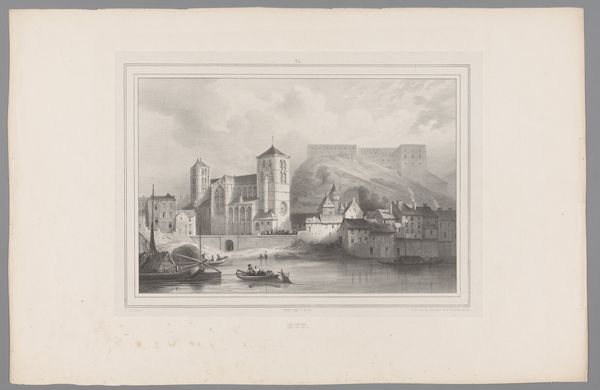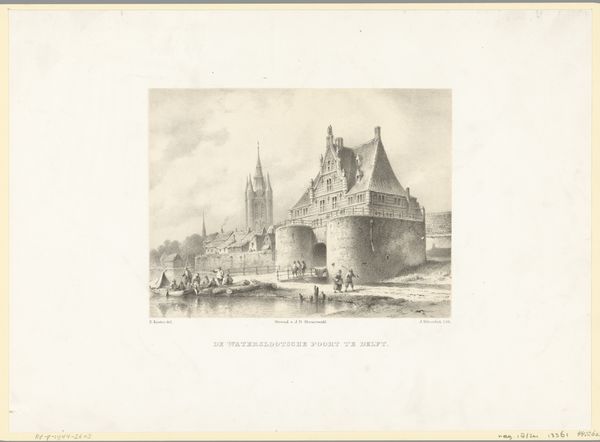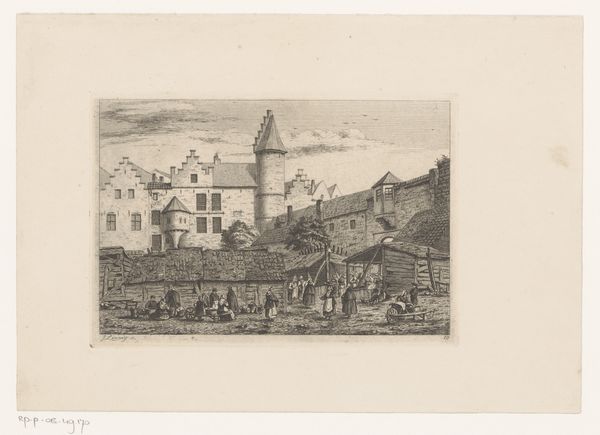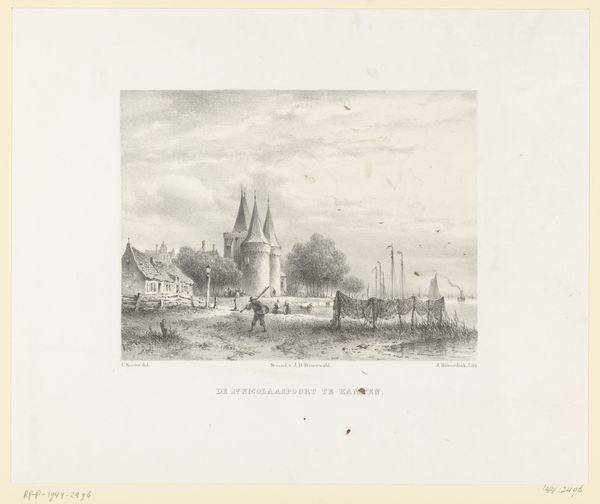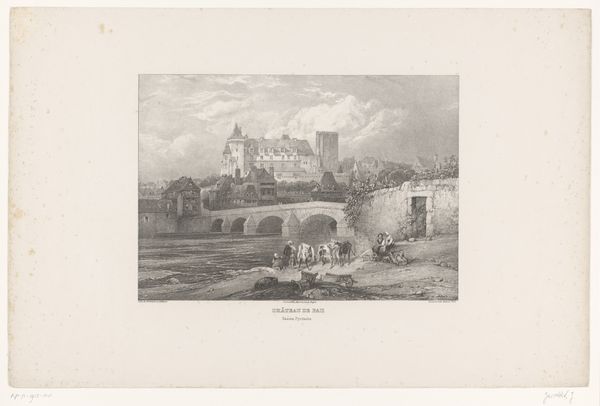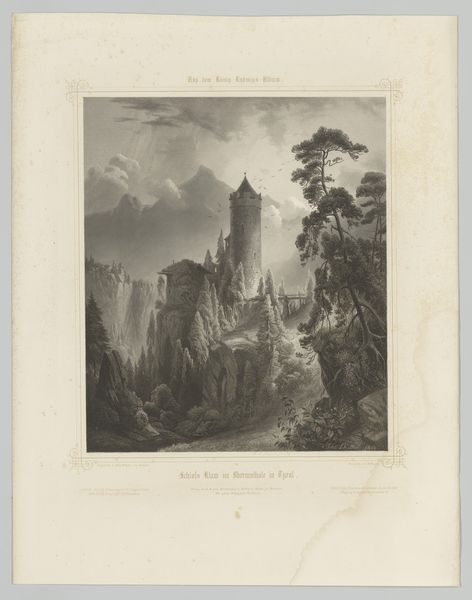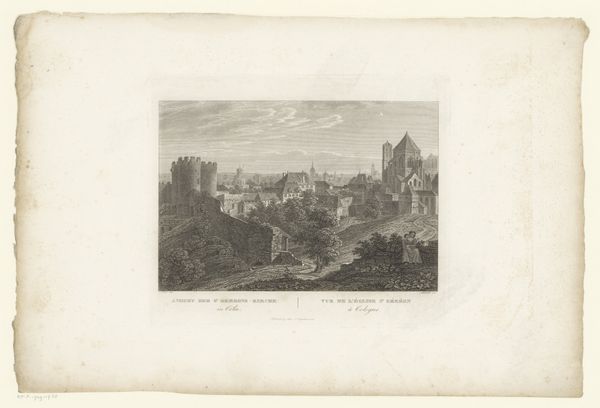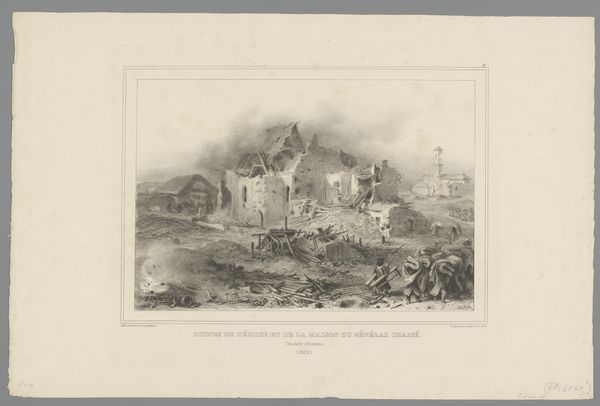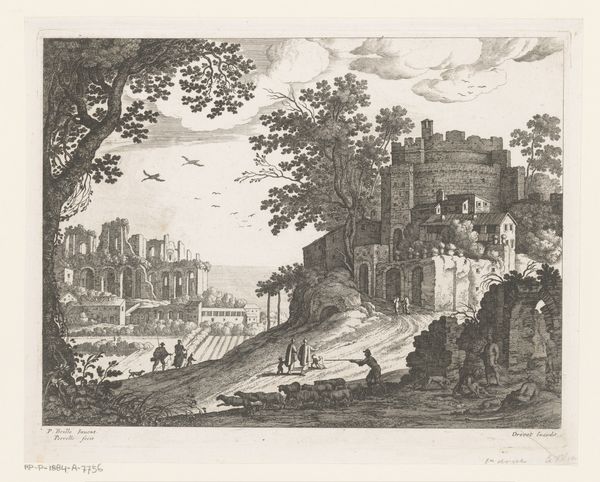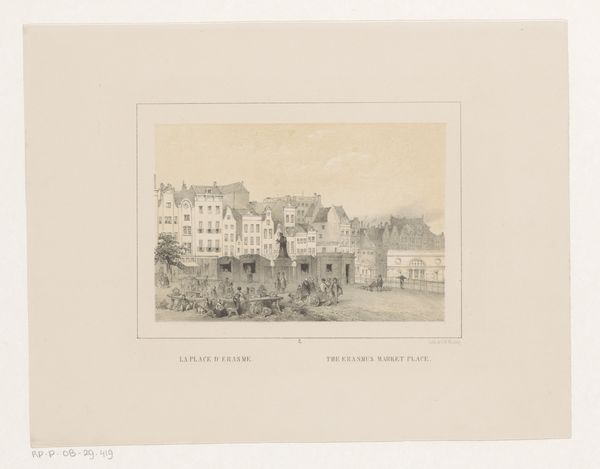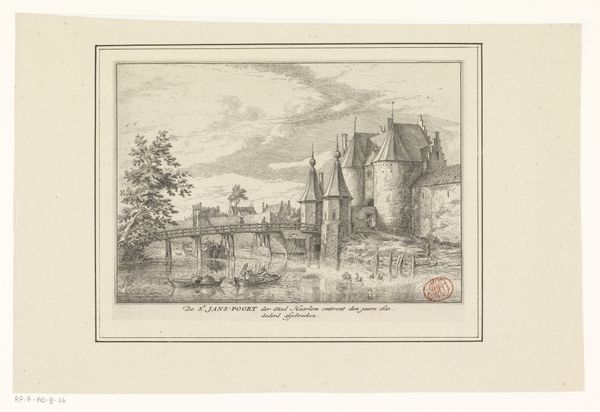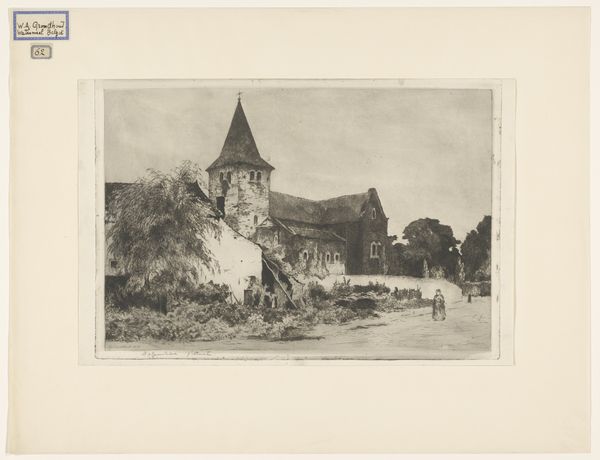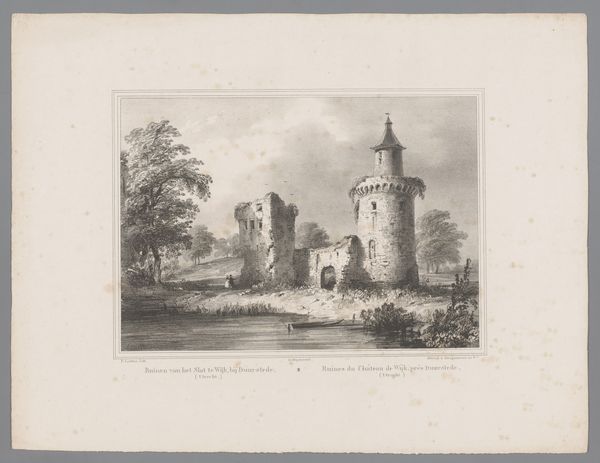
#
photo of handprinted image
#
aged paper
#
toned paper
#
light pencil work
#
pencil sketch
#
light coloured
#
curved letter used
#
watercolour bleed
#
watercolour illustration
#
watercolor
Dimensions: height 300 mm, width 438 mm
Copyright: Rijks Museum: Open Domain
Editor: We’re looking at “Zicht op Sonnenberg bij Wiesbaden,” created in 1855 by Armand Théophile Cassagne. It appears to be a watercolor and graphite rendering on paper. I find it remarkable how the artist achieved such delicate textures with watercolor. What aspects of the work’s formal qualities stand out to you? Curator: The artist’s manipulation of light is particularly striking. Observe the gradations of tone, shifting from the more intensely rendered architecture in the mid-ground to the diffused light in the background sky. Consider how the artist orchestrates tonal balance, shifting the viewer's perception using perspectival devices of aerial perspective to generate depth, drawing the eye from the robust structure in the foreground into the ethereal distance. How does this manipulation affect your interpretation? Editor: It’s like a deliberate choreography of the gaze! The contrast emphasizes the structural forms near us, the solid tower for example, versus the indistinct ruins further away. Do you think the composition reveals something more about the buildings, maybe their cultural role, or their significance within the landscape? Curator: One might also argue the opposite – that this very compositional treatment serves to underscore the formal tension between structure and dissolution; that it emphasizes ruin itself, a condition where stable form retreats into indefinite ethereality. Look closely at how the application of the graphite supports this formal dynamic. Editor: That’s a compelling point; the drawing’s linear precision really heightens that sense of contrasting permanence and decay. Seeing the nuances within these formal tensions truly enriched my understanding of this piece. Curator: Indeed, through careful visual examination we’ve uncovered subtleties often overlooked in purely representational readings, thereby reaffirming the profound potential latent within its visual fabric.
Comments
No comments
Be the first to comment and join the conversation on the ultimate creative platform.

